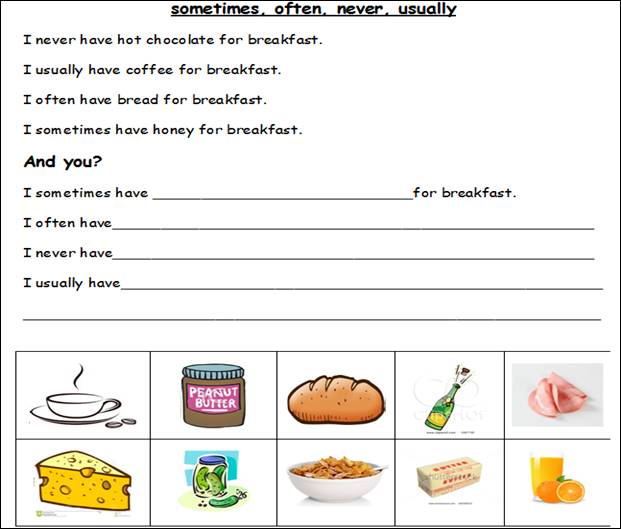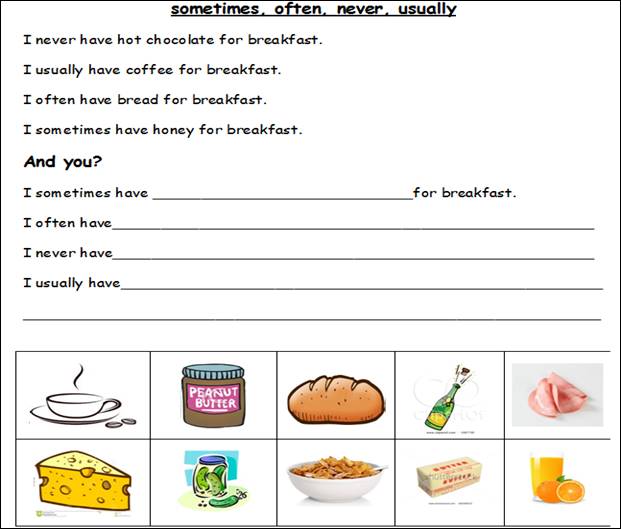
|
7. Healthy Habits Health problems |
School: |
|||||
|
Date: |
Teacher’s name:
|
|||||
|
Grade 7 |
Number present: |
Number absent: |
||||
|
Learning objectives(s) that this lesson is contributing to |
7.C1 Use speaking and listening skills to solve problems creatively and cooperatively in groups. 7.C10 Use talk or writing as a means of reflecting on and exploring a range of perspectives on the world. 7.UE9 Use appropriately an increased variety of present and past simple active and some passive forms on a growing range of familiar general and curricular topics. |
|||||
|
Lesson objectives |
All learners will be able to: |
|||||
|
· Understand specific information in short, simple texts and match the words with definitions. · Use adverbs : usually, sometimes, often, never. · Apply topic related vocabulary in speech. |
||||||
|
Most learners will be able to: |
||||||
|
· Comprehend - Use 1st Conditional. · Discuss a problem in groups and suggest solution for a problem; |
||||||
|
Some learners will be able to: |
||||||
|
· Use speaking and writing skills for the accurate usage of subject-specific speaking vocabulary. · Apply topic related vocabulary in speech with grammar accuracies. |
||||||
|
Language objective |
To use new active vocabulary and correct grammar constructions in their speech |
|||||
|
Value links |
Healthy Life Responsibility, |
|||||
|
Cross curricular links |
Biology |
|||||
|
Previous learning |
Speaking: Healthy and Unhealthy habits |
|||||
|
Use of ICT |
Smart Board and projector to present the material |
|||||
|
Intercultural awareness |
Accept the diversity of healthy hobbies among different people |
|||||
|
Kazakh culture |
Discuss the diversity of healthy heating habits in Kazakhstan |
|||||
|
Pastoral Care |
Student centered teaching: respect, support and scaffolding; To create a friendly atmosphere for collaborative work. Promote a sense of self-esteem and self-respect and respect for others among all the learners. |
|||||
|
Health and Safety |
Everyday classroom precautions will ensure that safety measures are provided to prevent the exposure of electrical power cords. |
|||||
|
Planned timings |
Planned activities |
Resources |
||||
|
Start 5 minutes
3 minutes
5 minutes
|
Pre-learning (W) Warm-up activity
4. Listen to Paul, a professional swimmer, and complete his daily menu with the words below. • egg • tomatoes • chicken • beef • bananas • potatoes • pasta • cheese • sugar • yoghurt • pizza • apples
5. Answer the questions. Find someone in the class with the same tastes. How often do you ...
|
Appendix 1
Students book p. 93
Students book p. 93
Асtivity boоk p.61
|
||||
|
7 minutes
10 minutes
10 minutes
|
||||||
|
5 minutes |
Homework Асtivity boоk p.61
Reflection At the end of the lesson, learners reflect on their learning answering the questions: - What has been learned today? - What remained unclear? - What is necessary to work on?
|
|
||||
|
End 1min |
Feedback: Teacher asks students what task was difficult to them and which pair worked well. |
|
||||
|
Additional information |
||||||
|
Differentiation – how do you plan to give more support? How do you plan to challenge the more able learners?
|
Assessment – how are you planning to check learners’ learning? |
Critical thinking
|
||||
|
More support: · Provide less able learners with the definitions and translations of the healthy eating habits. · Change learners’ roles in groups to make them more involved in the process of learning. For More able learners: Express their personal opinion in an open way and try to justify the answers giving a reason/why? |
· Make Notes in the “Observation Sheet for Learners” while they are participating in discussion, based on the following question:- How much did each learner contribute to the discussion? · Figure out the reason if not, why not? Give a short commentary (e.g. didn’t understand what to do; not so confident speaking, didn’t get the Lesson Objectives properly and so on… English; not interested in topic; other) |
Critical thinking on this lesson lies in expressing personal attitude to the healthy/unhealthy food and it is based on and good reasons and conclusions. |
||||
|
Summary evaluation What two things went really well (consider both teaching and learning)? 1: 2: What two things would have improved the lesson (consider both teaching and learning)? 1: 2: What have I learned from the lesson about this class or individuals that will inform my next lesson? |
||||||


Материалы на данной страницы взяты из открытых источников либо размещены пользователем в соответствии с договором-офертой сайта. Вы можете сообщить о нарушении.